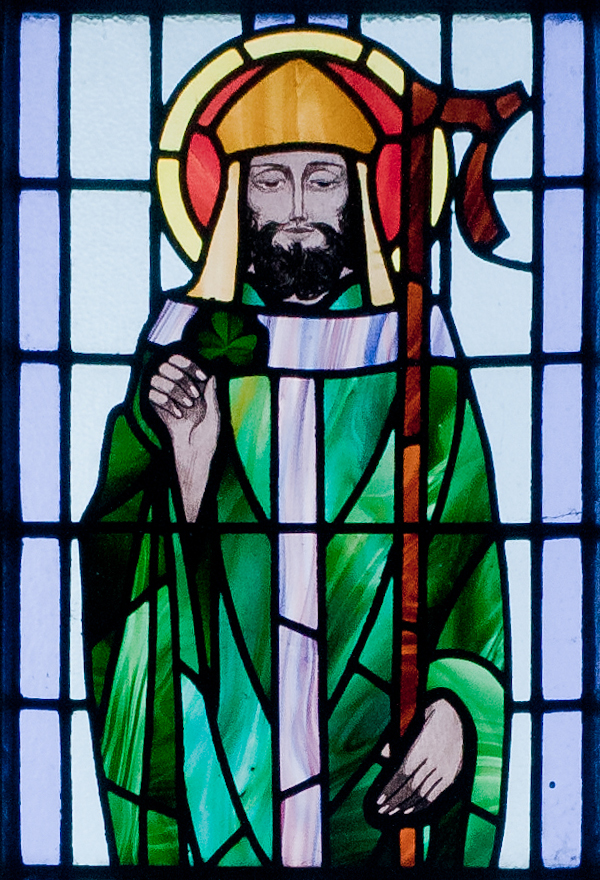segunda-feira, março 17, 2025
Lá Fhéile Pádraig - viva a Irlanda e todas as nações celtas...!
Postado por
Fernando Martins
às
15:06
0
bocas
![]()
Marcadores: Allariz, Baiuca, Bretanha, celtas, Cornualha, Dia de São Patrício, Escócia, Galiza, Ilha de Man, Irlanda, Lá Fhéile Pádraig, música, música celta, orgulho celta, País de Gales, São Patrício
Viva a Irlanda - hoje é dia de São Patrício!
Postado por
Fernando Martins
às
00:00
0
bocas
![]()
Marcadores: Apóstolo da Irlanda, celtas, Dia de São Patrício, Irlanda, Lá Fhéile Pádraig, São Patrício
domingo, março 17, 2024
Hoje é dia de São Patrício!
Postado por
Fernando Martins
às
00:30
0
bocas
![]()
Marcadores: Apóstolo da Irlanda, celtas, Dia de São Patrício, Irlanda, Lá Fhéile Pádraig, São Patrício
Lá Fhéile Pádraig - viva a Irlanda - e todos os povos celtas...!
Postado por
Fernando Martins
às
00:00
0
bocas
![]()
Marcadores: Allariz, Baiuca, Bretanha, celtas, Cornualha, Dia de São Patrício, Escócia, Galiza, Ilha de Man, Irlanda, Lá Fhéile Pádraig, música, música celta, orgulho celta, País de Gales, São Patrício
sexta-feira, março 17, 2023
Lá Fhéile Pádraig - viva a Irlanda (e os povos celtas)...!
Postado por
Fernando Martins
às
22:22
0
bocas
![]()
Marcadores: Allariz, Baiuca, Bretanha, celtas, Cornualha, Escócia, Galiza, Ilha de Man, Irlanda, Lá Fhéile Pádraig, música, música celta, orgulho celta, País de Gales, São Patrício
Hoje é dia de São Patrício!
NOTA: uma equipa portuguesa, no jogo de ontem em Londres, enganou-se na data e começou as comemorações antes do dia - acho lamentável...
Postado por
Fernando Martins
às
00:00
0
bocas
![]()
Marcadores: Apóstolo da Irlanda, celtas, Dia de São Patrício, Irlanda, Lá Fhéile Pádraig, São Patrício
quinta-feira, março 17, 2022
Lá Fhéile Pádraig - viva a Irlanda e os povos celtas...!
Postado por
Pedro Luna
às
11:11
0
bocas
![]()
Marcadores: Allariz, Baiuca, Bretanha, celtas, Cornualha, dança, Escócia, Galiza, Ilha de Man, Irlanda, Lá Fhéile Pádraig, música, música celta, orgulho celta, País de Gales, Riverdance, São Patrício
Hoje é dia de São Patrício!
Postado por
Fernando Martins
às
00:00
0
bocas
![]()
Marcadores: Apóstolo da Irlanda, celtas, Dia de São Patrício, Irlanda, Lá Fhéile Pádraig, São Patrício
quarta-feira, março 17, 2021
Lá Fhéile Pádraig!
Postado por
Geopedrados
às
12:21
0
bocas
![]()
Marcadores: dança, Irlanda, Lá Fhéile Pádraig, Mo Ghille Mear, música, música celta, orgulho celta, Riverdance, São Patrício
Hoje é dia de São Patrício!
Postado por
Fernando Martins
às
00:00
0
bocas
![]()
Marcadores: Apóstolo da Irlanda, celtas, Dia de São Patrício, Irlanda, São Patrício
terça-feira, março 17, 2020
Lá Fhéile Pádraig!
Postado por
Geopedrados
às
17:03
0
bocas
![]()
Marcadores: Athair Ar Neamh, Dia de São Patrício, Enya, Irlanda, Lá Fhéile Pádraig, música, música celta, São Patrício
Hoje é dia de São Patrício!
Postado por
Fernando Martins
às
11:11
0
bocas
![]()
Marcadores: Apóstolo da Irlanda, celtas, Dia de São Patrício, Irlanda, São Patrício
domingo, março 17, 2019
Hoje é o Dia do São Patrício e da Irlanda!
Postado por
Fernando Martins
às
00:00
0
bocas
![]()
Marcadores: Apóstolo da Irlanda, celtas, Irlanda, São Patrício
sexta-feira, março 17, 2017
Hoje é o Dia do São Patrício e da Irlanda!
Postado por
Fernando Martins
às
11:11
0
bocas
![]()
Marcadores: Apóstolo da Irlanda, celtas, Irlanda, São Patrício
segunda-feira, março 17, 2014
Porque hoje foi o Dia da Irlanda e de São Patrício!
Postado por
Pedro Luna
às
23:59
0
bocas
![]()
Marcadores: celtas, Irlanda, música celta, São Patrício
Hoje é o Dia do São Patrício e da Irlanda!
Postado por
Fernando Martins
às
10:45
0
bocas
![]()
Marcadores: Apóstolo da Irlanda, celtas, Irlanda, São Patrício
domingo, março 17, 2013
Hoje foi Dia de São Patrício e da Irlanda!
Postado por
Fernando Martins
às
23:58
0
bocas
![]()
Marcadores: Fee Ra Huri, Igreja Católica, Irlanda, música, música celta, Omnia, São Patrício
sábado, março 17, 2012
Hoje é dia do (verdadeiro) São Patrício!
Postado por
Pedro Luna
às
09:48
0
bocas
![]()
Marcadores: cerveja, Irlanda, Lá Fhéile Pádraig, Saint Patrick, São Patrício


.JPG/800px-St_Patricks_Day,_Downpatrick,_March_2011_(045).JPG)








